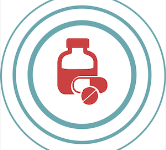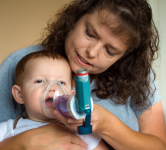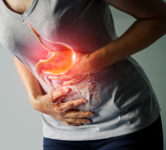FREE! Stop That Clot: Haemostasis and anticoagulants
2 hours
2 hours
Conclusion
Haemostasis and its controls are complex. Abnormal clotting can have a significant impact on health and well-being. Prophylaxis for VTE or arterial thromboembolism is becoming increasingly common and nurses are encountering more people on anticoagulant therapy. Nurses who understand the physiological and pharmacological aspects of abnormal clotting and drugs used to treat it are better able to discuss the actions of drugs and their associated risks with patients. Understanding the rationale for care and advice given to patients about anticoagulation improves delivery of care.Now complete the online learning activities (take the quiz) to attain your continuing professional development certificate. There are three ‘reflection’ points in this learning activity. Your answers to these are downloaded and sent to you along with your certificate, for inclusion in your portfolio. These reflection points allow you to demonstrate your reflection process for professional development recognition.
References
- American College of Cardiology (2014). Atrial fibrillation toolkit. Accessed March 2015. http://www.acc.org/tools-and-practice-support/clinical-toolkits/atrial-fibrillation-afib
- Australian and New Zealand Working Party on the Management and prevention of Venous Thromboembolism. (2007). Prevention of Venous Thromboembolism: Best practice guidelines for Australia and New Zealand. HEMI: Health Education and Management Innovations.
- Adams, M., Ward, C., Thom, J., Bianchi, A., Perrin, E., Coghlan, D., et al. (2007). Emerging technologies in hemostasis diagnostics: A report form the Australasian Society of Thrombosis and Haemotology Emerging Technologies Group. Seminars in Thrombosis and Hemostasis , 33, 226-234.
- Barber, A., Fink, J., Gommans, J., Hanger, C., & Baker, Y. (2006). New Zealand protocols for the management of stroke and transient ischaemic attack. Christchurch: Stroke Unit Netwrok of New Zealand.
- Barnett, H., Burrell, P., & Iheanacho, I. (2010). Don't use aspirin for primary prevention of cardiovascular disease. British Medical Journal , 340, c1805.
- Best Practice Advocacy Centre New Zealand. (2007). Interactions with warfarin. Retrieved December 2, 2010 from www.bpac.org.nz: http://www.bpac.org.nz/magazine/2007/april/warfarin.asp
- Boehringer Ingelheim NZ Ltd. (2009). Pradaxa New Zealand Data Sheet. Wellington: Medsafe .
- BPAC NZ. (2010, October). INR point of care testing in community pharmacies - is this the future? Retrieved December 6, 2010 from BPAC NZ Upfront: http://www.bpac.org.nz/magazine/2010/october/upfront.asp
- CSL Biotherapies. (2008). Streptase. Retrieved December 3, 2010 from Medsafe medicine data sheets: http://www.medsafe.govt.nz/profs/Datasheet/s/streptaseinj.htm
- Geerts, W., Bergqvist, D., Pineo, G., Heit, J., Samama, C., M.R., L., et al. (2008). Prevention of venous thromboembolism: American College of Chest Physicians evidence-based clinical practice guideines. Chest , 133, 381S-453S.
- Gray, E., Mulloy, B., & Barrowcliffe, T. (2008). Heparin and low-molecular-weight heparin. Thrombosis and Haemostasis , 99, 807-818.
- Hoffman, M., & Monroe, D. (2007). Coagulation 2006: A modern view of hemostasis. Hematology/Oncology Clinics of North America , 21, 1-11.
- Indraratna, P. & Cao, C. (2014). New antiplatelet drugs for acute coronary syndrome. Australian Prescriber. 37(6): 182-186.
- James, A. (2009). Venous thromboembolism: Mechanisms, treatment and public awareness. Arteriosclerosis, Thrombosis and Vascular Biology. 29:326-331.
- January, C. et al. (2014). The 2014 AHA/ACC/HRS guideline for the management of patients with atrial fibrillation. Circulation. 130:e199-e267.
- Kroll, M. (2010, December). Clinical Laboratory News: Thromboelastography. Retrieved December 4, 2010 from American Association for Clinical Chemistry:http://www.aacc.org/publications/cln/2010/december/Pages/ Thromboelastography.aspx
- Lip, G. et al. (2010). Refining clinical risk stratification for predicting stroke and thromboembolism using a novel risk factor-based approach: the euro heart survey on atrial fibrillation. Chest.137(2): 263-272.
- McCance, K., & Huether, S. (2014). Pathophysiology: The biological basis for disease in adults and children (7th ed.). St Louis, MO, USA: Mosby.
- Medsafe Prescriber Update Articles. (2010, June). Warfarin- reports of serious adverse reactions continue. Retrieved December 2, 2010 from www.medsafe.govt.nz: http://www.bpac.org.nz/magazine/2007/april/warfarin.asp
- National Institute for Health and Clinical Excellence. (2010). Venous Thromboembolism: Reducing the risk. London: NICE.
- Neilson, R. (2010). Warfarin: Is the end nigh? Please? Journal of the Royal College of Physicians Edinburgh , 40, 222-223.
- NHMRC: National Health and Medical Research Council of Australia. (2009). Clinical practice guideline for the prevention of venous thromboembolism in patients admitted to Australian hospitals. Accessed March 2015. http://www.nhmrc.gov.au/_files_nhmrc/publications/attachments/cp115_guideline_prevention_venous_thromboembolism.pdf
- NICE: National Institute for Health and Clinical Excellence. (2012). Venous thromboembolic diseases: the management of thromboembolic diseases and the role of thrombophilia testing. CG144. Accessed March 2015. https://www.nice.org.uk/guidance/cg144/chapter/introduction
- NICE: National Institute for Health and Clinical Excellence. (2013). Quality standard for diagnosis and management of venous thromboembolic disease. QS29. Accessed March 2015. https://www.nice.org.uk/guidance/qs29/chapter/introduction-and-overview
- NICE: National Institute for Health and Clinical Excellence. (2014). Atrial Fibrillation: The management of atrial fibrillation. Clinical guideline 180.
- Phillips, S., Gallagher, M., & Buchan, H. (2008). Use graduated compression stockings postoperatlively to prevent deep vein thrombosis. British Medical Journal , 336, 943-44.
- Platt, A., Localio, R., Brensinger, C., Cruess, D., Christie, J., et al. (2010). Can we predict daily adherence to warfarin? Results from the international normalised ratio adherence and genetics (IN-RANGE) study. Chest, 137(4),883-889.
- Rang, H., et al. (2012). Rang and Dale's Pharmacology (7th Edition ed.). London: Churchill Livingstone Elsevier.
- Ruppert, A., Lees, M., & Steinle, T. (2010). Clinical burden of venous thromboembolism. Current Medical Research & Opinion , 26 (10), 2465-2473.
- Samardhi, H. et al. (2011). Current management of atrial fibrillation. Australian Prescriber. 34:100-104.
- Tanaka, K., Key, N., & Levy, J. (2009). Blood coagulation: Hemostasis and thrombin regulation. Anesthesia & Analgesia , 108, 1433-46.
- The New Zealand Guidelines Group. (2005). The management of people with atrial fibrillation and flutter. Wellington: New Zealand Guidelines Group.
- The Merck Manual. (2009). Deep vein thrombosis. Retrieved December 1, 2010 from Merck Manuals Online Medical Library: http://www.merckmanuals.com/professional/sec07/ch081/ch081b.html #CIHDDBHD
- Weitz, J., & Bates, S. (2005). New Anticoagulants. Journal of Thrombosis and Haemostasis, 3, 1843-1853.
- Witt, D. (2010). Opitmizing use of current anticoagulants. Hemotology and Oncology Clinics of North America , 24, 716-726.
- Wofford, J., Wells, M., & Singh, S. (2008). Best strategies for patient education about anticoagulation with warfarin: A systematic review. BMC Health Services Research , 8, 40.
- Wong, C.-K., & White, H. (2007). Direct antithrombins: Mechanisms, trials, and role in contemporary interventional medicine. American Journal of Cardiovascular Drugs, 7 (4), 249-257





